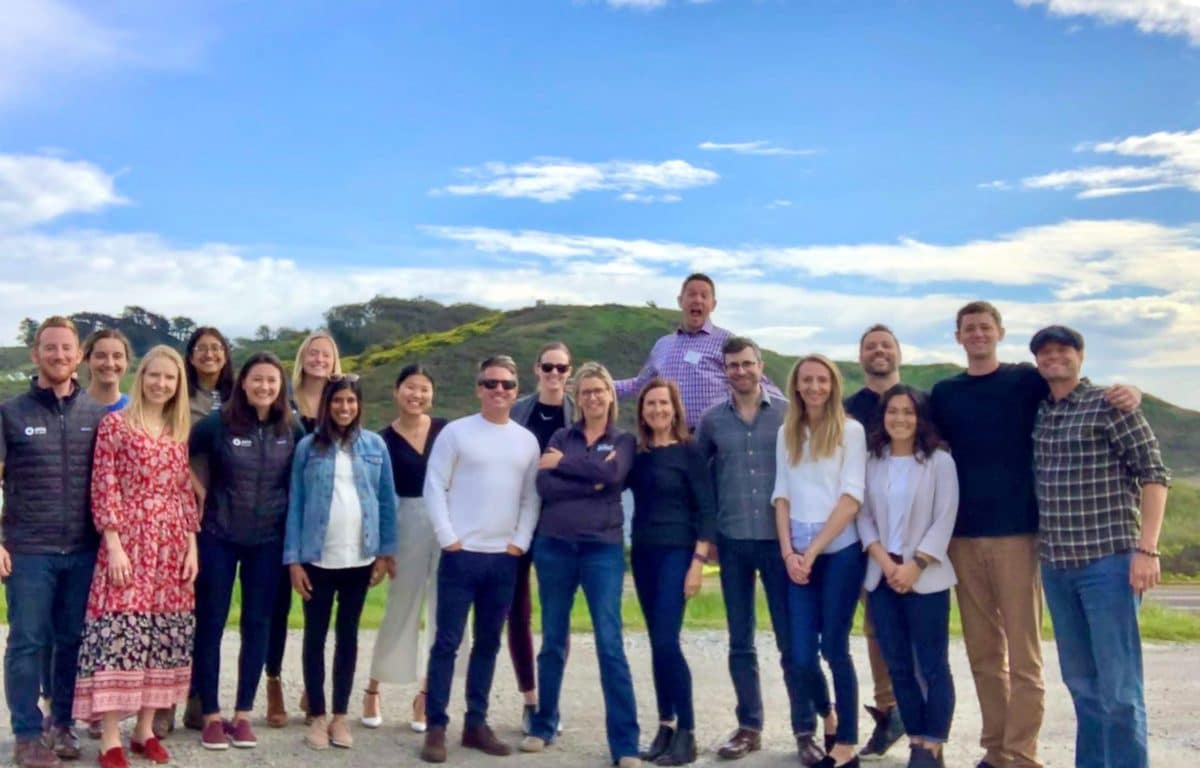Digital transformation is not a new concept to business operations. It’s been used across disciplines and industries. But what does digital transformation mean to in-house legal teams? And what are the tactical steps to make it a reality?
An inside look at a digital transformation strategy
Ironclad Legal is paperless, and our team already operates in cloud-based applications — Gsuite (file management), Slack (instant business communications), Brightflag (e-Billing) and Ironclad (CLM). So our team’s mandate is less about a shift from analog to digital or centralization of independent workstreams (in a multidisciplinary legal department), and more about the use of technology and process to achieve higher efficiency without increasing internal resources.
In the past 12 months, as our company has scaled rapidly in the midst of a pandemic, embracing digital transformation has been key for our team of three — led by our GC Chris Young — to sustain delivery of excellent services and keep up with growing legal requests.
Today, Legal Ops can lead the way in identifying and implementing technology and processes to improve department efficiencies, freeing up teams to focus on substantive legal work.
Here are key trends and learnings that worked well for our legal ops journey in 2020:
Legal is no longer siloed
Legal delivers legal services that advance business objectives, so its tools and processes shouldn’t be siloed either. A good starting point to consider is how new tech or a process might affect how business units interact with Legal.
- It’s all about people, people, people. Not all legal ops projects bring systematic change in one sweep. We spent much time gathering internal business requirements and setting expectations with business teams on the timing, deliverability and impact of new legal process changes to business operations.
Approach cross-functional teams with empathy and an open-mind. Design a process that balances those requirements and the available legal resources. Ensure your champions across business units understand the vision, timing and expected results of any technology or process change being implemented. Make sure they’re on board before the ship sails. - Little things make big things happen. Seemingly small optimizations can in aggregate amount to a great improvement in efficiency, incremental value.
For example, in our CLM platform, we built in a third-party paper intake option for key contract templates to eliminate coordination of one-off email or Slack requests. Workflows are mapped to well-defined approval groups, including Finance, Legal, Security Ops and department managers, so that business users across departments are guided through the contracting process from request to signature in a single workflow. This minimizes the need to have a dozens conversations and emails on a business transaction. - Continuous feedback is important. After the technology or process is implemented, follow up with a structured channel to collect feedback. Establish feedback conversations when necessary, listen to stakeholders’ responses and ask questions to understand their views. Continuous improvement is important in maintaining adoption and support of a system or process.
Rebranding Legal as strategic advisors
Legal work has historically been viewed as siloed and “a black hole.” The current transformation is an opportunity to rebrand Legal.
Legal tech is now on the same playing field as other business teams’ tools. These new tools can demystify legal processes for internal clients and further help legal teams and others to reimagine Legal’s role in the business.
Mind-boggling processes like contract negotiation and legal accrual no longer sit across multiple tools like email, Word and Excel. Applications like Ironclad and Brightflag connect stakeholders and decentralized work streams into a single platform.
In Ironclad, the anatomy of the contract negotiation is codified and displayed as intuitive modules (launch, review, sign, repository). Over the past few months, we’ve achieved 100% digital contracting — all our buy and sell contracts are reviewed and stored in Ironclad, where the platform serves as the single source of truth across teams. Contract requestors are informed of all of the actions associated with the contract every step of the way, and legal reviewers can dive into legal work without dealing with a logistical hassle associated with contract review while keeping the contract requestors apprised of progress. This collaborative approach to contracting elevates Legal as a business partner. Both the legal team and contract requestors couldn’t be happier with the outcome.
In Brightflag, we’ve eliminated the manual invoice submission (through email) with our entire outside counsel panel. A single platform is now used to manage the invoice review process. The clunky steps to intake, review the bills in a .PDF, and ask clarifications from outside counsel on line items are completely eliminated. The various Excel sheets I used to track outsourced legal matters, accruals and spend are now streamlined into a single platform. I can easily report on month-over-month or quarter-over-quarter spend to the GC in seconds.
Beyond building connectedness and providing visibility and clarity into legal work, legal digital transformation allows Legal to collect data and quantify achievements (e.g., spend savings, volume of work, spend to budget analysis). It’s a game changer to have systematic access to this data. Not only we can measure where things stand today, but also document progress as we move forward. The upshot? Legal is rebranded as strategic advisors and we have the data to back it up.
Finding happiness in more legal tech choices
Thanks to the rise of modern legal teams and investment in legal tech, innovation in the legal industry is now more prevalent than ever. Legal Ops now has options in complexity, pricing and functionality in tools and applications. However, more options can also create more confusion, especially when business priorities and internal systems are bound to be different across industries.
When selecting and investing in legal operations technology or a process for my team, adoption and use are critical. Buying tech for the sake of buying tech leads to failed implementation.
Rarely does an out-of-the-box tool solve all your problems. There are three must-have characteristics to look for: compatibility, accessibility and adaptability.
Compatibility. You have to do homework before you buy tech. Launching an RFP is one way. Gather internal business requirements. You want other teams to come into your house, and say, “Wow! It feels great to collaborate with you here.” It can be as simple as typing a chart that identifies your organization’s process deficiencies and a wishlist of how technology can help you solve that problem. “I need X functionality to solve Y problem.”
Accessibility. A secure, cloud-based system should allow my team to collaborate from anywhere. Also, it’s incredibly important to establish synergy with the overall IT infrastructure and culture of the company. Rapid transformation is happening with all departments, not just Legal. Establish open dialogues before you buy on how your tech will work with existing tools and applications.
Adaptability. It’s important that the tech configuration is intuitive and easy to implement. It’s not optimal to work with a vendor where your team’s operation depends on the support team or engineer to make a change in the back-end.
I am a big proponent of low-code, no-code configuration where the Legal Ops team can implement change on the fly without expending tremendous resources. In Ironclad, my team uses Workflow Designer to perform basic configuration tweaks to contract templates and workflows, allowing Ironclad Legal to move as fast as the business.
Technology alone isn’t going to solve problems. The most successful implementation of legal technology not only requires a clearly defined objective from the get-go but also requires a continual reassessment of processes as business evolves.
This is just the end of the beginning for Legal Operations
Hand sanitizer. Face mask. Social distancing. None of these words had any significance in my life until 2020. Looking back at the past year, not only these objects and concepts have dominated the mainstream, some predict that the current times signal a macro environment shift where things are going to look different than ever before.
I believe that legal operations as a profession, as a legal department function, and as an identity within in-house team structure is going to emerge from the pandemic stronger, better and more respected. No less than a legal operations renaissance.
As a legal operator at a tech company with the mission of “building the product that legal teams love,” I am fortunate to be connected with a community of the best and brightest legal ops minds across industries and geographies. In speaking with fellow legal operators, I’ve learned we play a critical role in modernizing and shaping the future of legal departments by driving legal digital transformation.
Many of us are leading the way in implementing innovative technology and processes that ensure business continuity in the midst of great uncertainty and disruption. Those responsibilities, coupled with better and more legal tech options and wider adoption of “Legal Operations” in job functions, mean legal ops professionals are gaining recognition as strategic leaders in legal departments and beyond.
Ironclad is not a law firm, and this post does not constitute or contain legal advice. To evaluate the accuracy, sufficiency, or reliability of the ideas and guidance reflected here, or the applicability of these materials to your business, you should consult with a licensed attorney. Use of and access to any of the resources contained within Ironclad’s site do not create an attorney-client relationship between the user and Ironclad.




